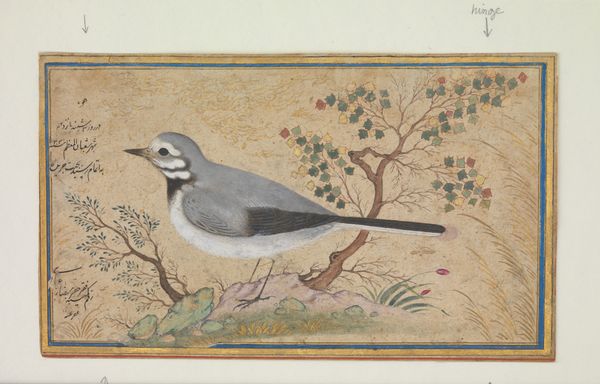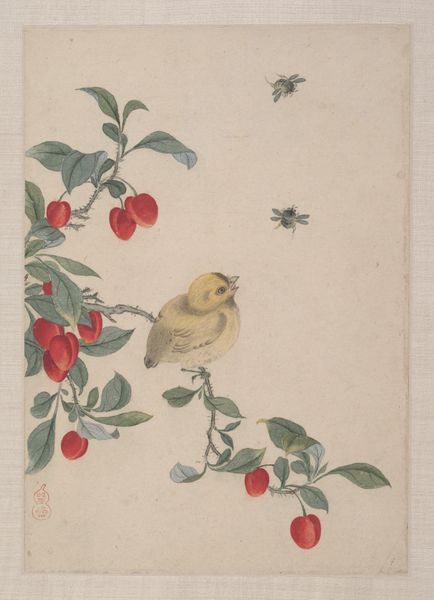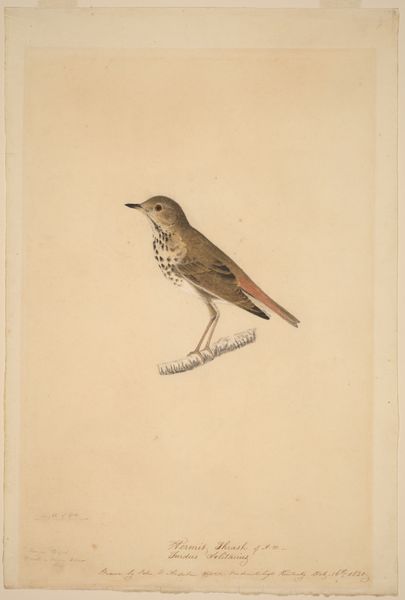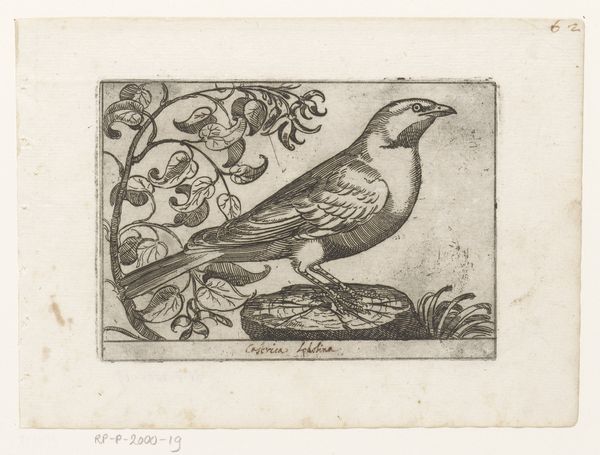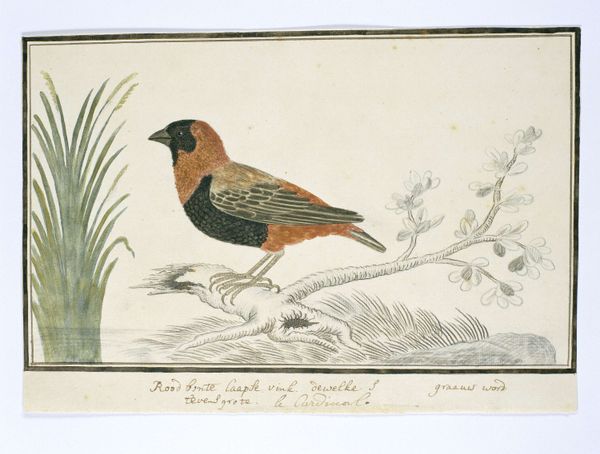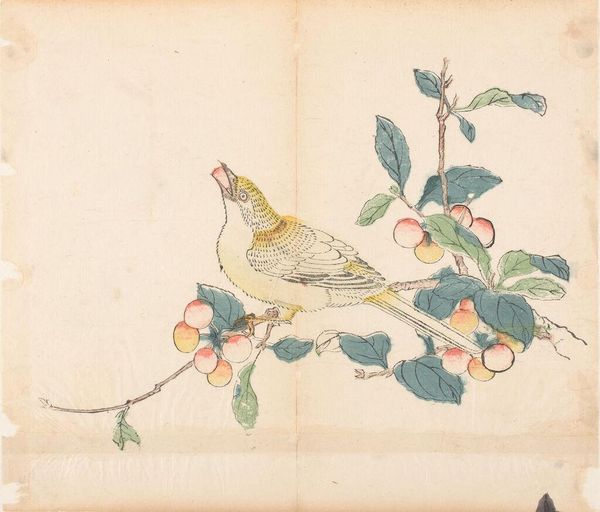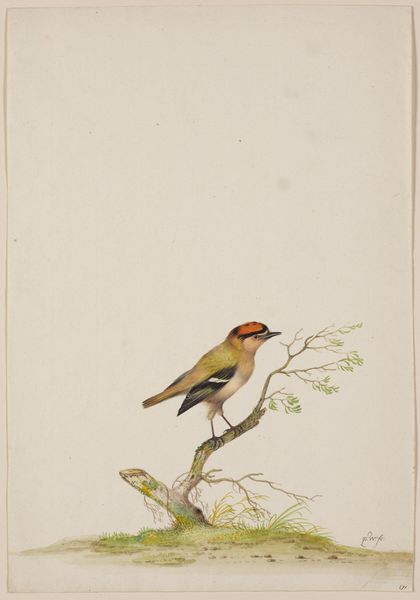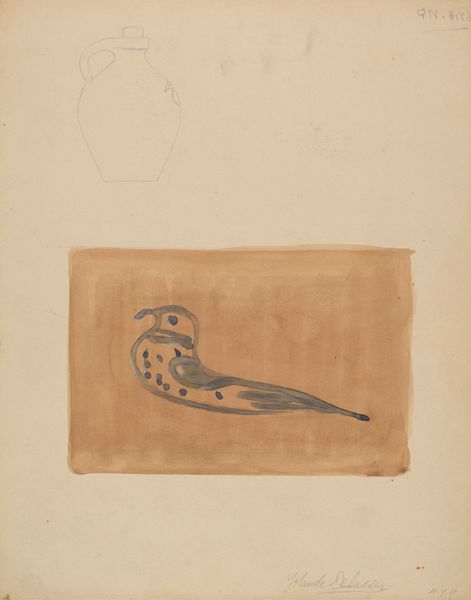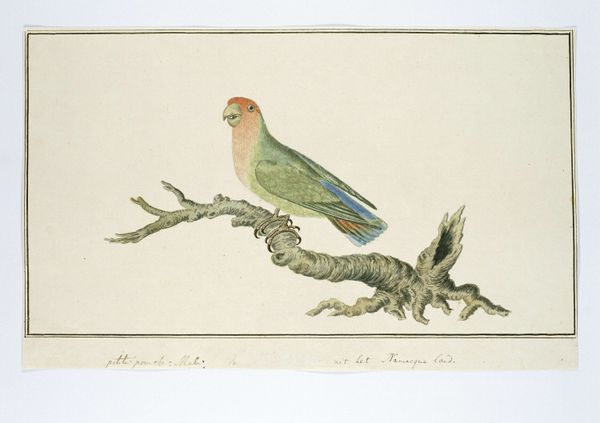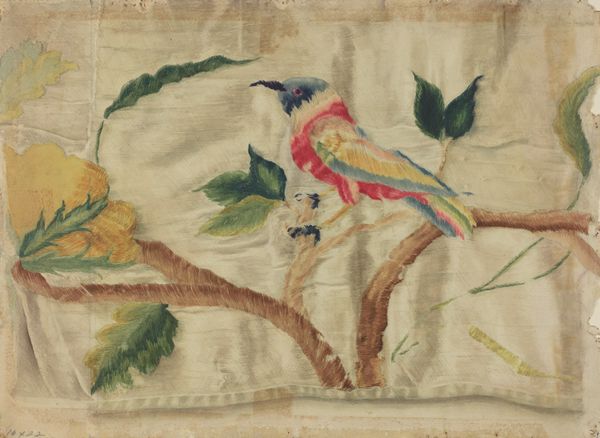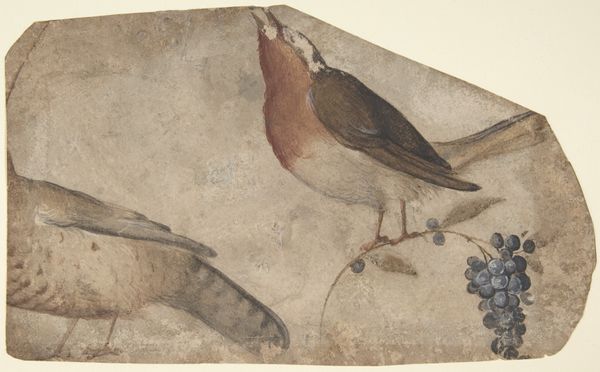
drawing, textile, pencil
#
drawing
#
water colours
#
landscape
#
textile
#
figuration
#
coloured pencil
#
pencil
Dimensions: overall: 23 x 30.5 cm (9 1/16 x 12 in.) Original IAD Object: 11" high; 13" wide
Copyright: National Gallery of Art: CC0 1.0
Editor: This is Ralph Morton’s "Sampler," made around 1938. It seems to combine drawing with textile work; a rendering of a bird, possibly a jay, perched on a branch. It has a quiet, almost nostalgic mood, doesn't it? How would you interpret this work, thinking about its time? Curator: Indeed. It's interesting how it blends artistic media; drawing, watercolor and possibly textile, creating a somewhat traditional sampler form with a figuration. Consider the 1930s: mass production was becoming dominant. The Arts and Crafts movement had waned but its concerns lingered, hasn't it? Do you think this piece engages with that tension of art, craft, and industry? Editor: It could be! I mean, samplers were traditionally domestic crafts, weren't they? This feels like it’s reaching for something more… deliberately artistic. It's almost like the artist is elevating a common craft, what do you mean by tension with industry? Curator: Precisely! We have the visual echo of needlework, a domestic activity traditionally associated with women, being presented as an art object but there’s the social reality. Industrialization moved textile production out of the home and into factories, simultaneously devaluing the role of the home crafter and altering our cultural relationship to fabric as raw material. What’s really fascinating is that we also see an underdrawing; there’s an explicit awareness of production and the layers behind this ‘folk’ construction. Editor: That’s fascinating – the drawing, it being more ‘open’. So, is it less about the subject itself, and more about the statement it makes about art’s place in a changing society? Curator: Precisely, it encourages us to consider art as an integrated facet of larger social and cultural transitions. Editor: I hadn't thought about the historical context so deeply before. Now it feels less like a simple bird and more like a statement! Curator: Absolutely, looking at art through a socio-political and economic lens adds depth, doesn't it? I am glad we could engage in that way together today.
Comments
No comments
Be the first to comment and join the conversation on the ultimate creative platform.
